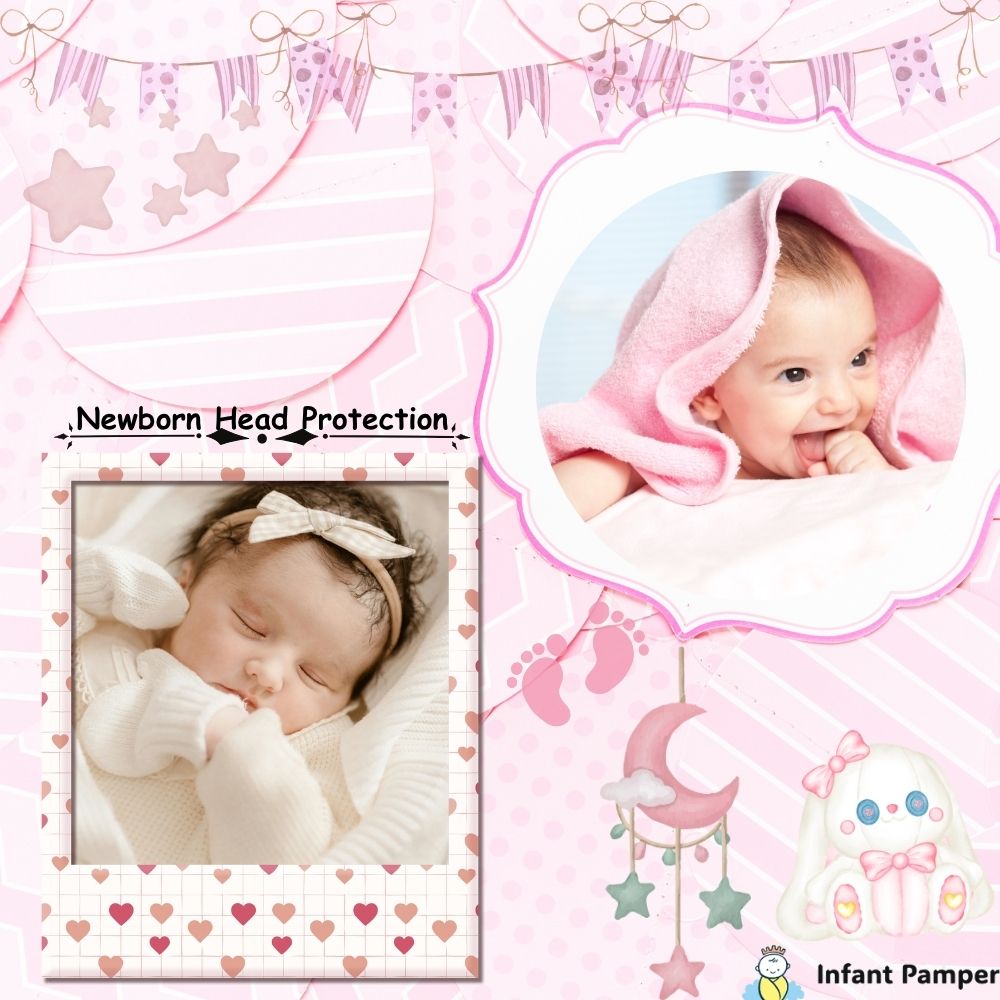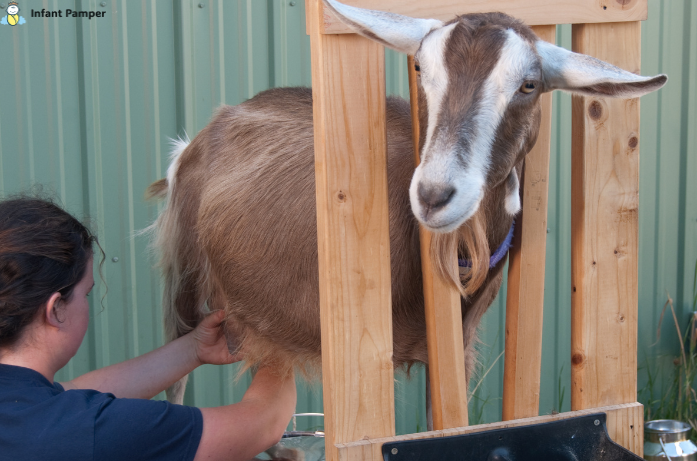By a caring mom at Infant Pamper
As new parents, nothing is more precious than the safety and wellbeing of your baby. One of the most important—yet often overlooked—aspects of infant care is head protection. Your newborn’s head is incredibly delicate. With soft bones and a fast-growing brain, extra care is needed to safeguard your little one from injury, even in everyday life.
Why Is Newborn Head Protection So Important?
At birth, a baby’s skull is made up of several soft bones that haven’t fused together yet. These gaps (called fontanelles or “soft spots”) help the head pass through the birth canal and allow space for rapid brain growth. But until these bones fully close—usually around 12 to 18 months—your baby’s head is much more vulnerable to bumps, falls, and pressure.
Even minor head injuries can cause serious consequences in infants, from bruises and swelling to rare—but dangerous—brain bleeds. That’s why every parent should know the basics of infant head safety.
Common Risks to Watch For
- Falls from beds or changing tables: Even a short drop can cause a head injury for a baby.
- Accidental bumps: Young siblings, pets, or a swinging toy can knock a baby’s head when you least expect it.
- Unsafe sleep environments: Pillows, heavy blankets, or clutter in the crib can put pressure on a baby’s skull or face.
- Car seat and carrier accidents: Always check for proper installation and ensure straps are snug but not tight over the head.
- Rough play or tossing: Always remind visitors and older children to be gentle with a newborn’s head and neck.
Why Newborn Heads Are So Fragile
Newborns’ heads are uniquely vulnerable for several reasons:
Developmental fragility: According to the American Academy of Pediatrics, infants and young children are more prone to head injuries due to their soft skulls, immature brain structure, and lack of neck control. This underlines the importance of proper head protection—especially during activities like stroller rides, tummy time, or when they begin to crawl .
Open fontanelles: Those soft “spots” (fontanelles) between the skull bones allow brain growth and flexibility during birth—but also create areas of relative weakness.
Disproportionate head size & weak neck muscles: A newborn’s head makes up a much larger portion of their body compared to adults—about 25% of body length at birth, while the brain is roughly 25% of its adult size . With underdeveloped neck strength, babies can’t yet support or stabilize their heads.
Choosing the Right Baby Head Protector
Many parents ask: Should I use a head protector, helmet, or pillow for my baby? Here’s what to know:
- Head‑shaping pillows, sometimes marketed to prevent flat spots (plagiocephaly), may actually create unsafe sleep environments. The American Academy of Pediatrics warns against these pillows due to suffocation hazards and no proven benefits. Instead of relying on such products, follow pediatric guidance—use supervised tummy time, repositioning strategies, and consult your pediatrician if head shape concerns arise
- Soft Helmets: For babies at risk of frequent tumbles (especially once crawling begins), a lightweight, soft-cushioned helmet may protect against bumps during supervised play. These are especially useful for children with developmental delays or certain medical needs.
- Baby Carriers and Slings: Ensure your baby’s head and neck are supported and not pressed into fabric or straps. Always follow the manufacturer’s instructions and check for recalls.
- Crib and Play Area Safety: Keep cribs free of heavy blankets, toys, or bumpers. Use a firm mattress and place baby on their back for every sleep.
Practical Tips for Everyday Head Safety
- Supervise All Tummy Time: Always stay close when your baby is on the floor. Use a soft, clean mat to cushion small slips or rolls.
- Never Leave Baby Alone on Raised Surfaces: Falls are the most common cause of head injuries in infants—always keep a hand on your baby during diaper changes or dressings.
- Car Seat Safety: Make sure the car seat is installed correctly, and never use aftermarket head supports that aren’t crash-tested with your seat model.
- Teach Gentle Touch: Encourage siblings and visitors to be gentle around your baby’s head.
- Watch Out for Pets: Keep pets away from baby’s sleeping or playing area to avoid accidental bumps.
Spotting Signs of Head Injury
If your baby has a fall or bump, look out for these warning signs and call your pediatrician or visit the ER if you notice:
- Unusual sleepiness, lethargy, or trouble waking
- Repeated vomiting
- Seizures, twitching, or jerky movements
- Bleeding from the nose or ears
- Persistent crying, high-pitched or weak cry
- Loss of interest in feeding or trouble sucking
- Noticeable swelling, dents, or soft spots that seem larger than usual
When in doubt, trust your instincts and get medical help right away. Early treatment is key to the best outcome.
Encouraging Healthy Head Growth
- Give supervised tummy time daily: This builds neck muscles and relieves pressure from the back of the head.
- Alternate head position during sleep: Gently turn your baby’s head to different sides for naps (while always placing baby on their back to sleep).
- Limit time in car seats, swings, or bouncers: Too much time lying in one position can contribute to flat spots.
FAQs About Newborn Head Protection
- Are soft spots normal? Yes, fontanelles are normal and necessary for brain growth and delivery. They usually close between 12-18 months.
- When should I call the doctor? Any head injury that causes loss of consciousness, seizures, abnormal movement, or persistent vomiting needs urgent evaluation.
- Is helmet therapy needed for all babies? No, only some infants with moderate or severe flat head syndrome (plagiocephaly) or certain medical conditions require helmet therapy—your pediatrician will guide you.
Final Thoughts for New Parents
Your newborn’s head holds their most precious organ—the brain. While gentle touch, love, and play will help your baby thrive, don’t forget a few simple safety steps can go a long way in preventing injuries. Choose head protection gear that fits your baby’s needs, keep sleep spaces safe, and supervise closely—especially as your little one starts to roll and explore. You’re not just protecting their head; you’re nurturing their whole future.
For more tips on infant safety, developmental milestones, and real-world parenting support, explore trusted resources like HealthyChildren.org.
You’ve got this, mom and dad! Protecting your newborn’s head is one of the kindest ways to give them a safe, healthy start in life.




